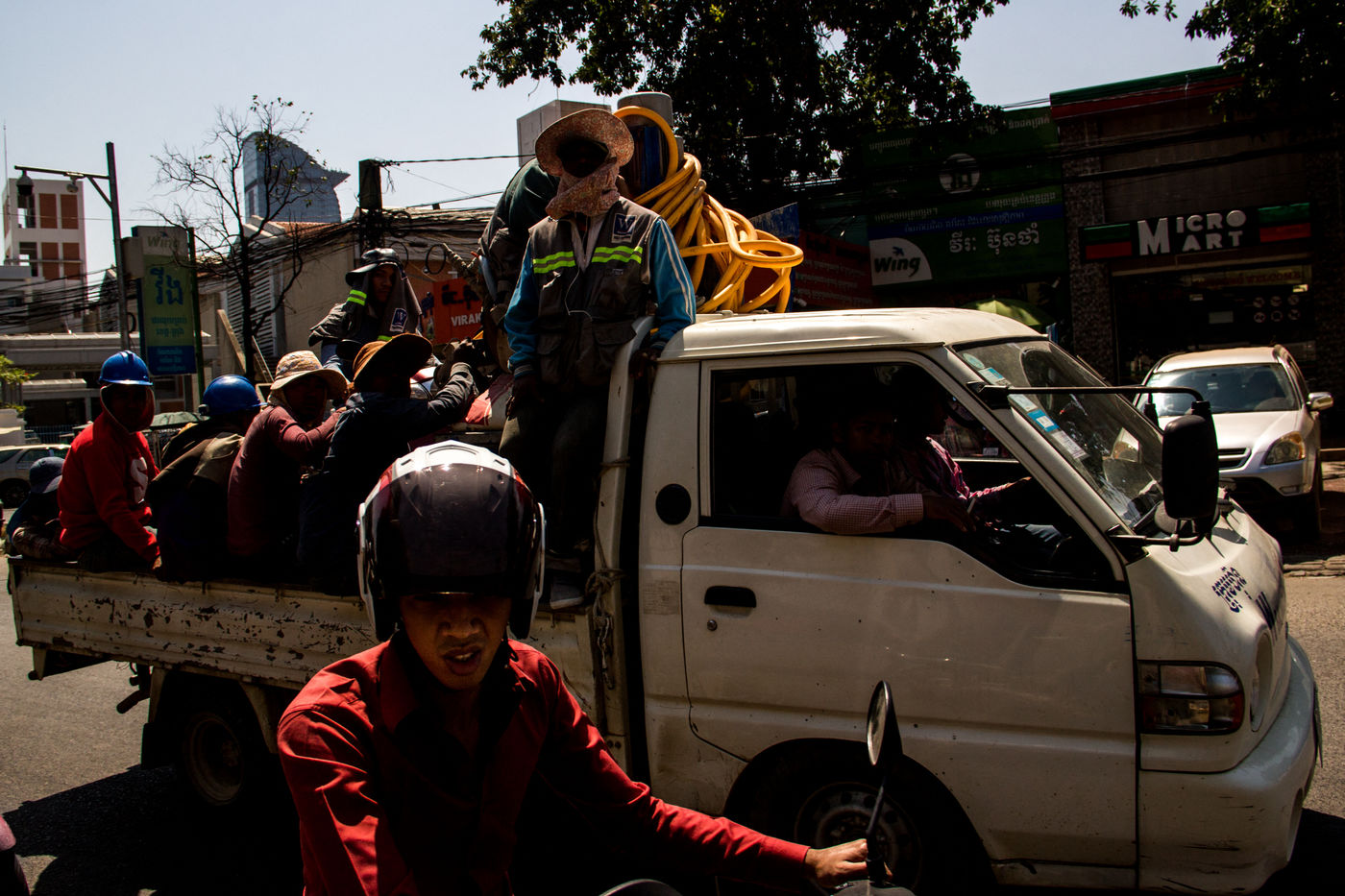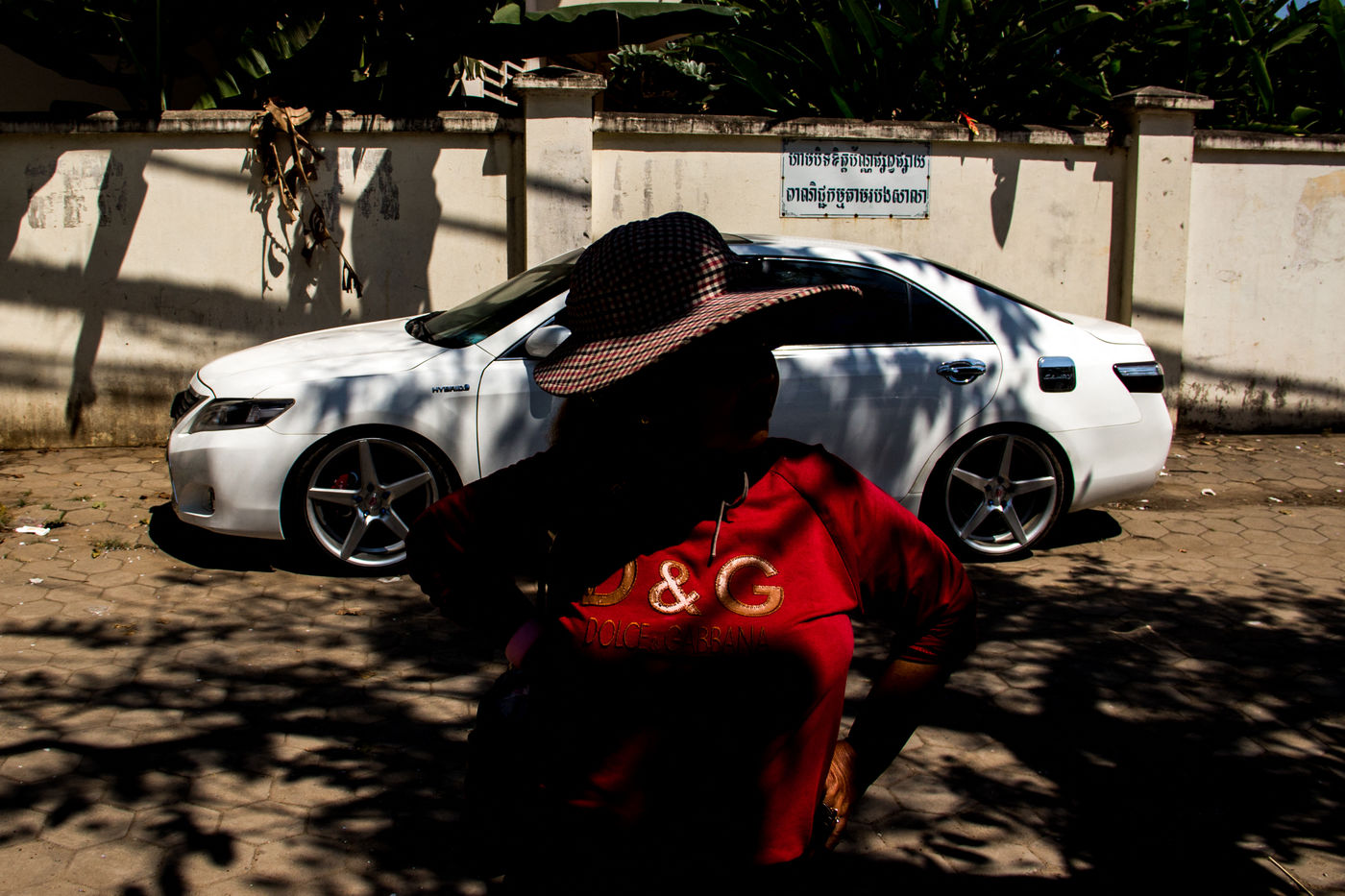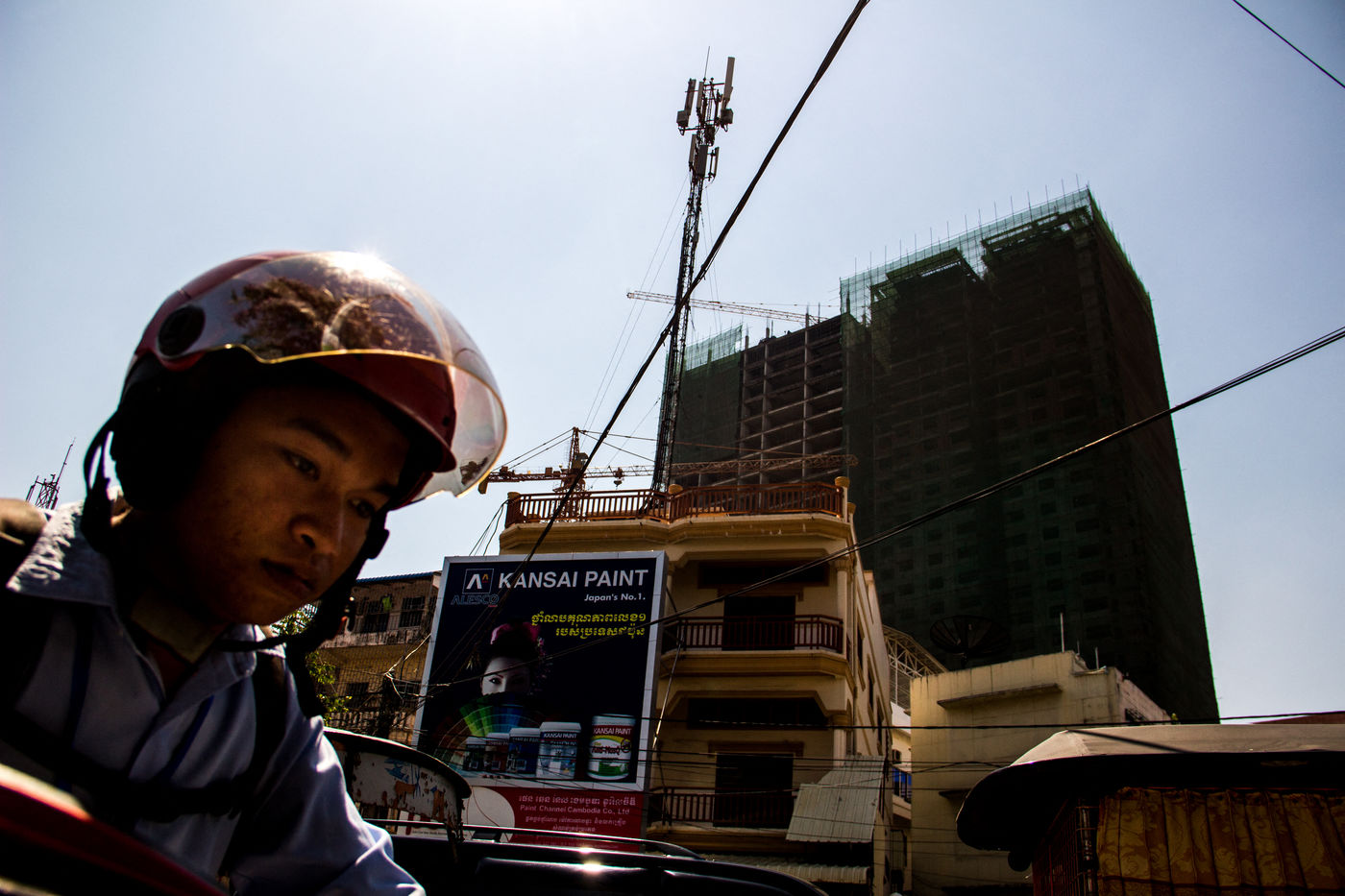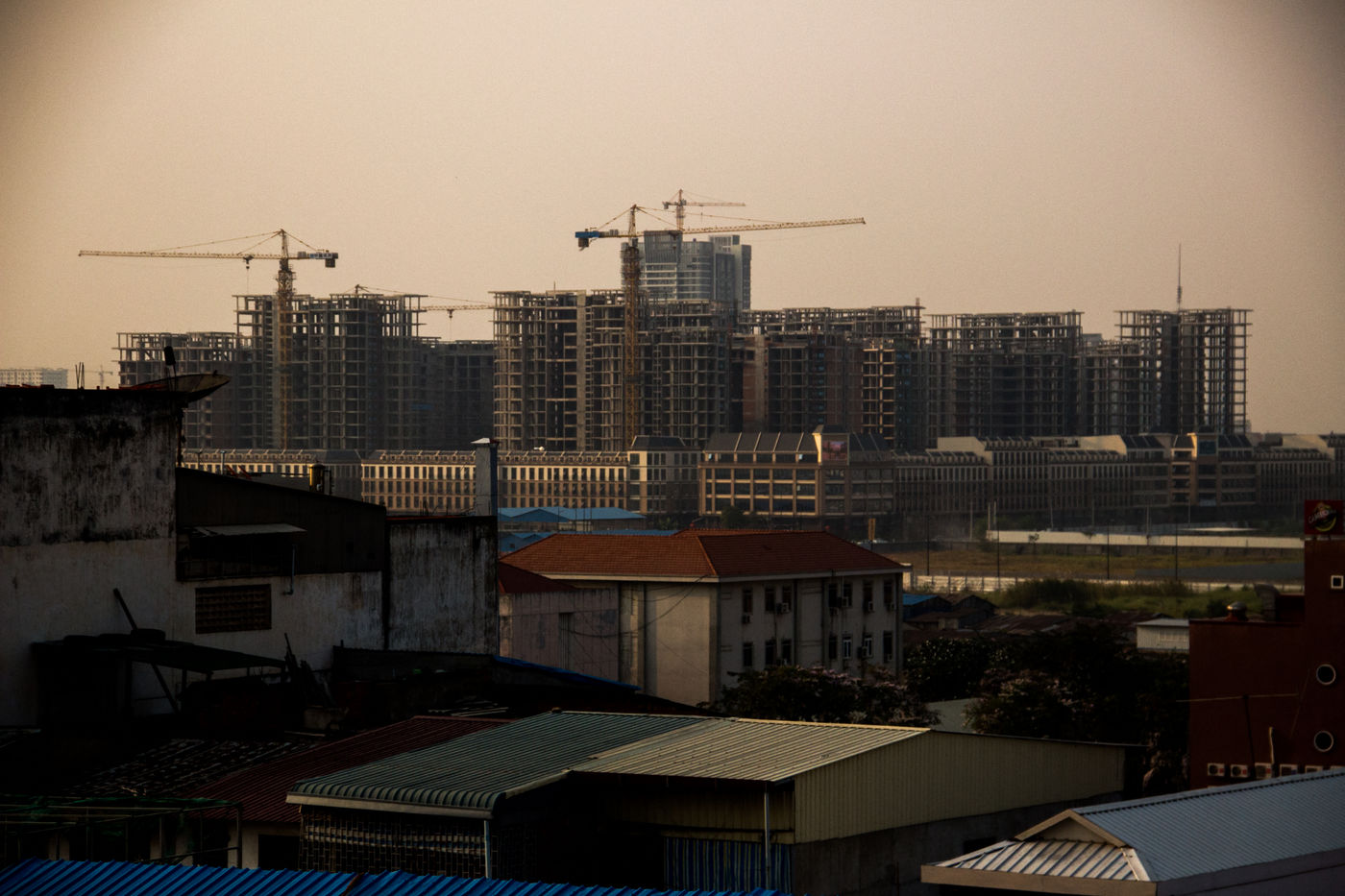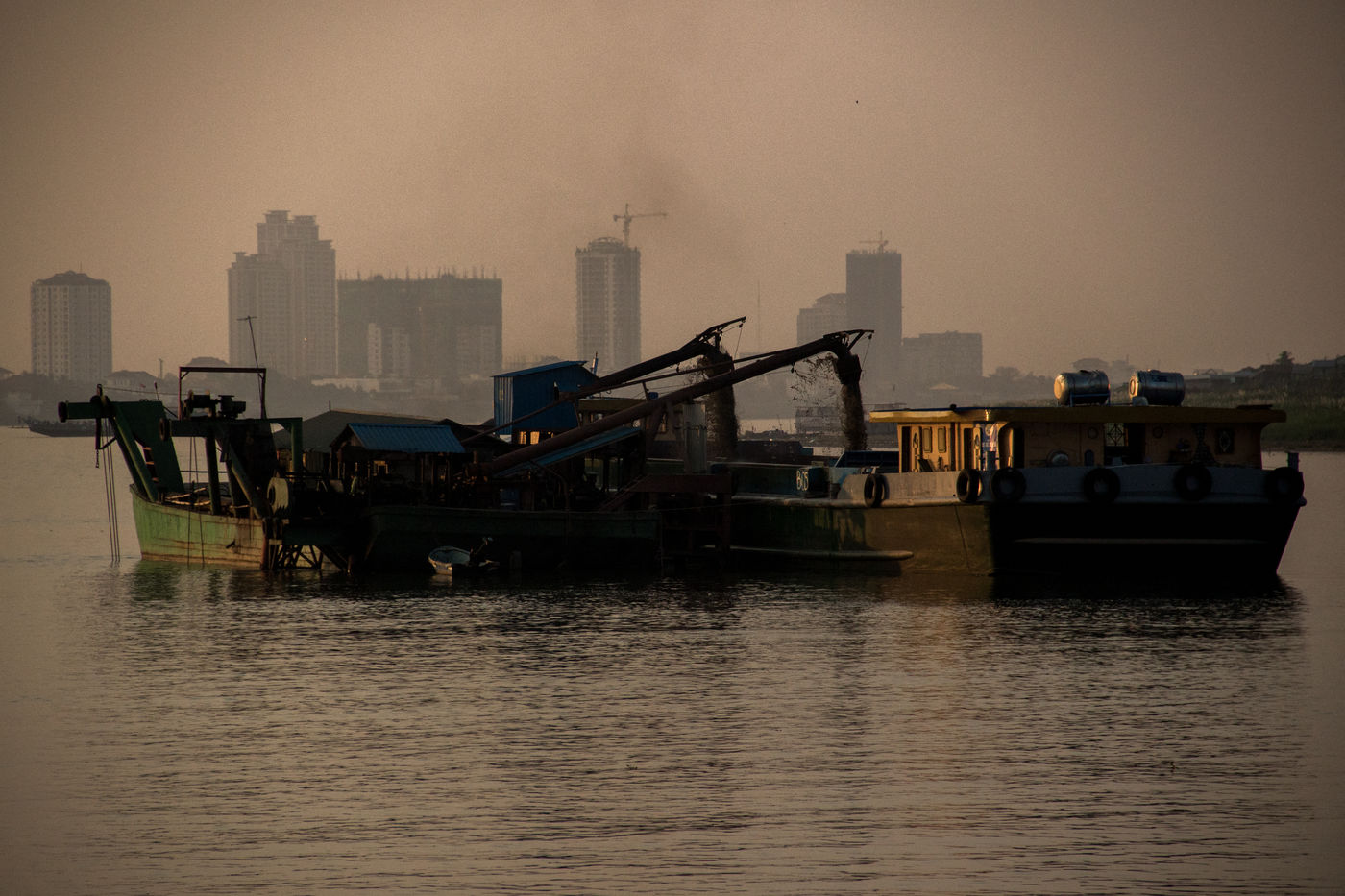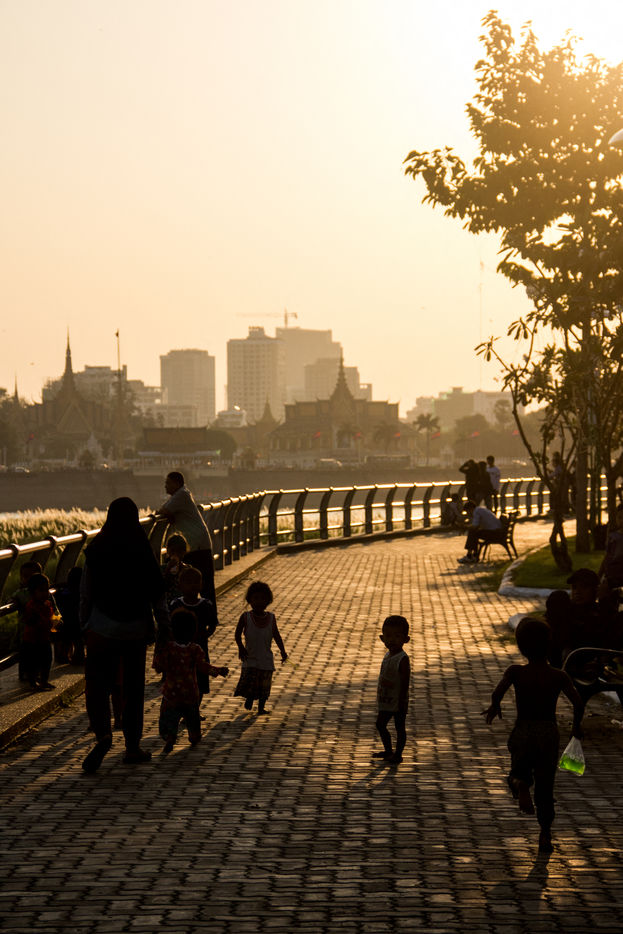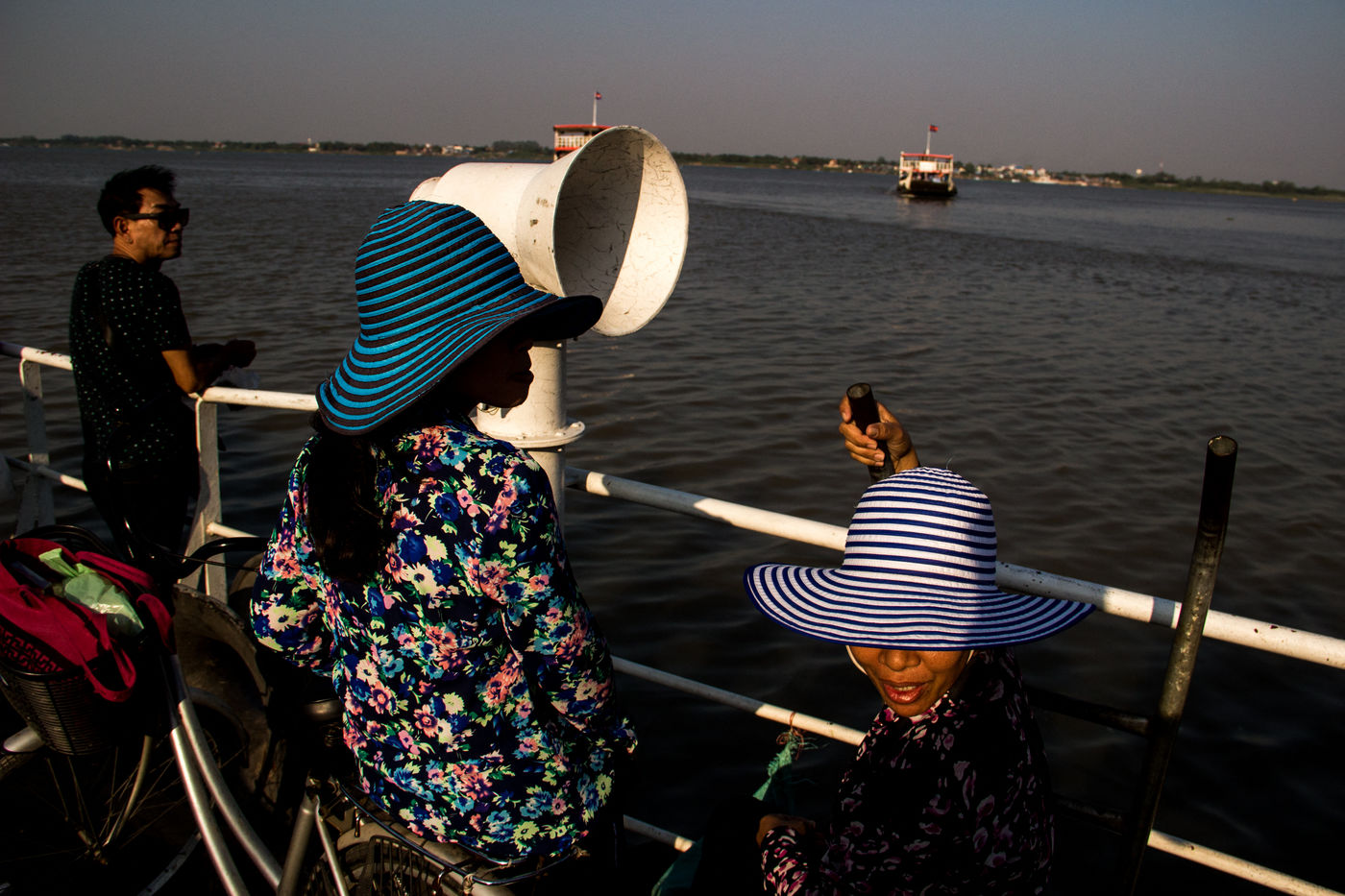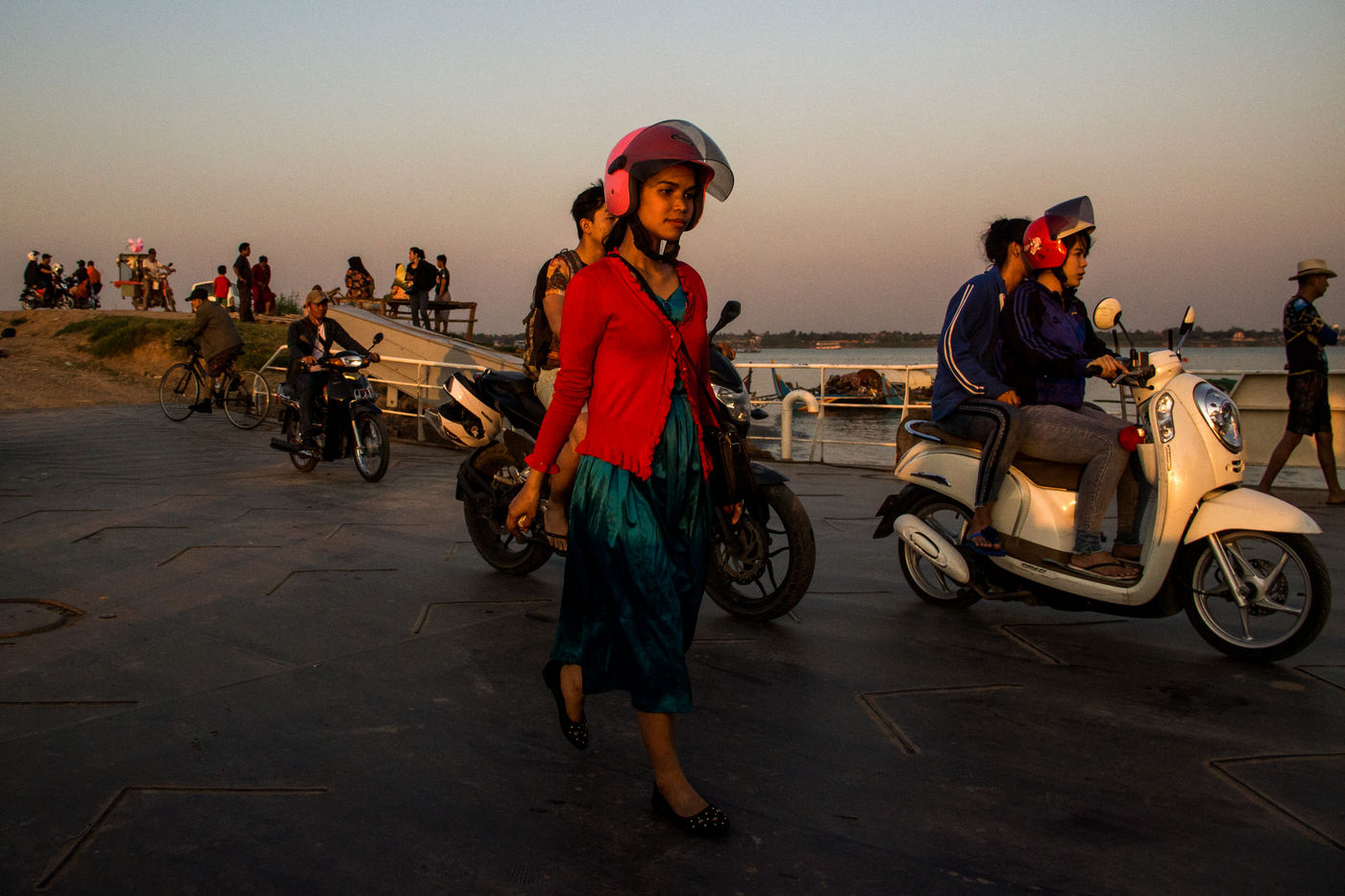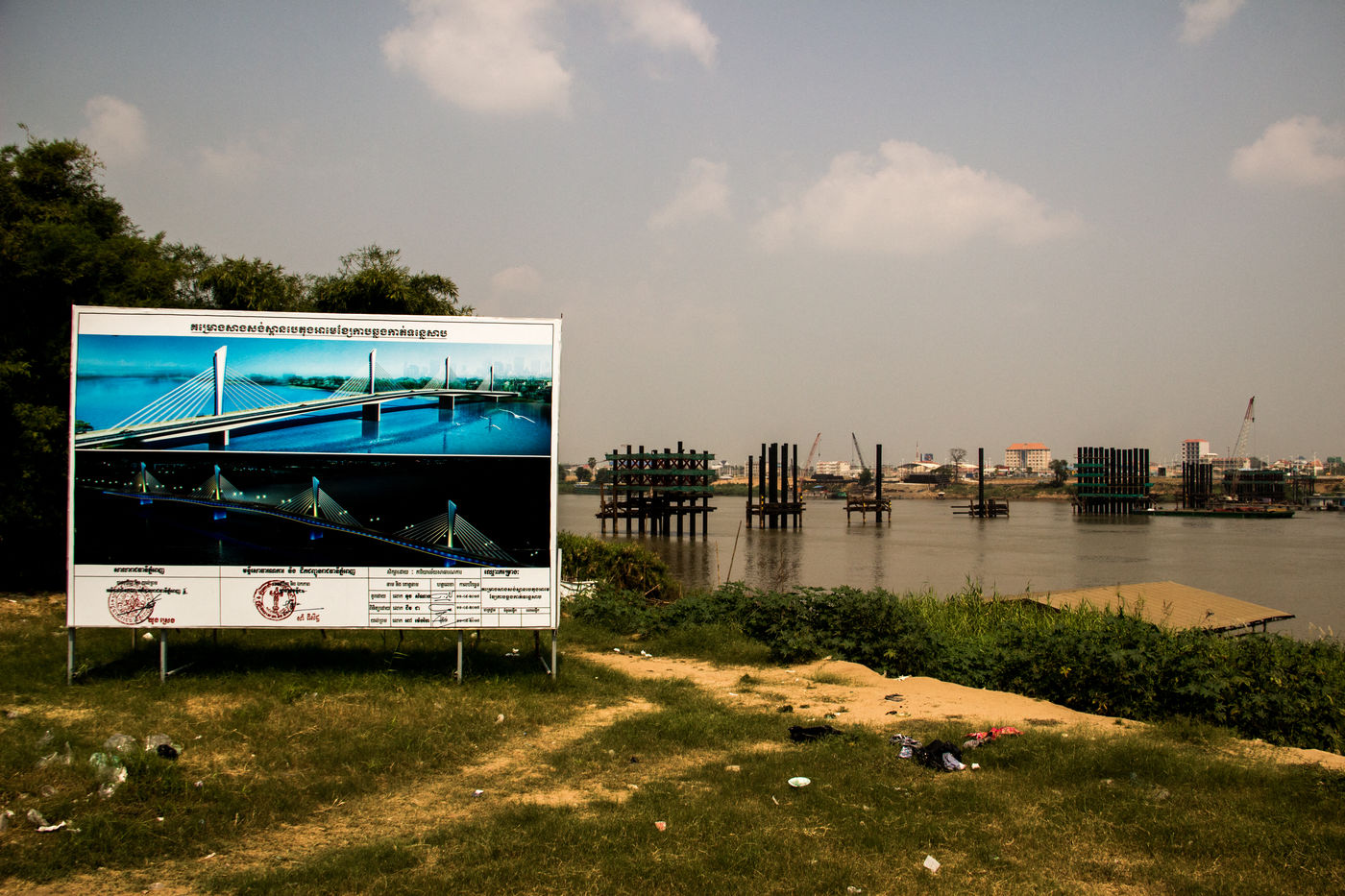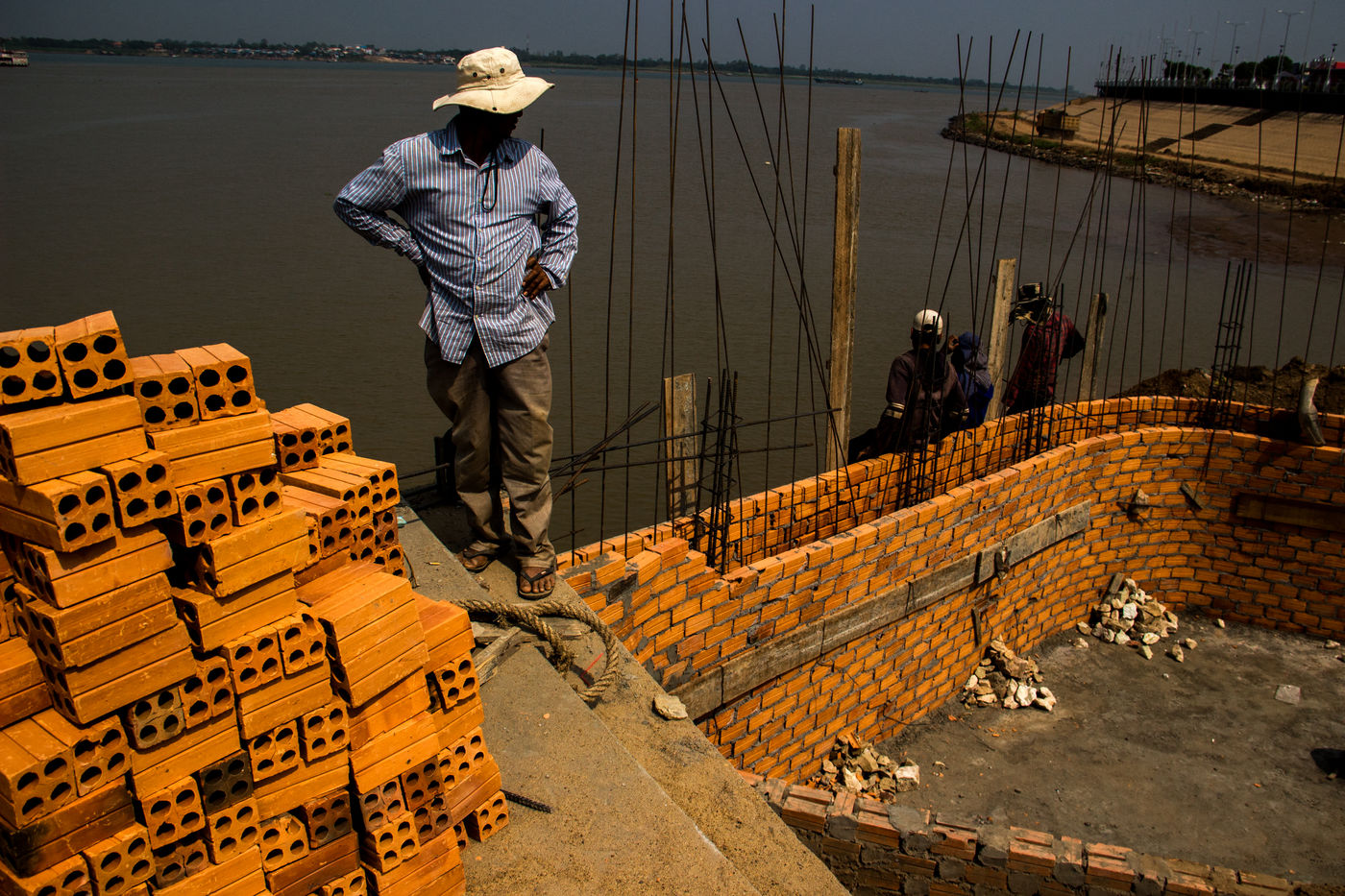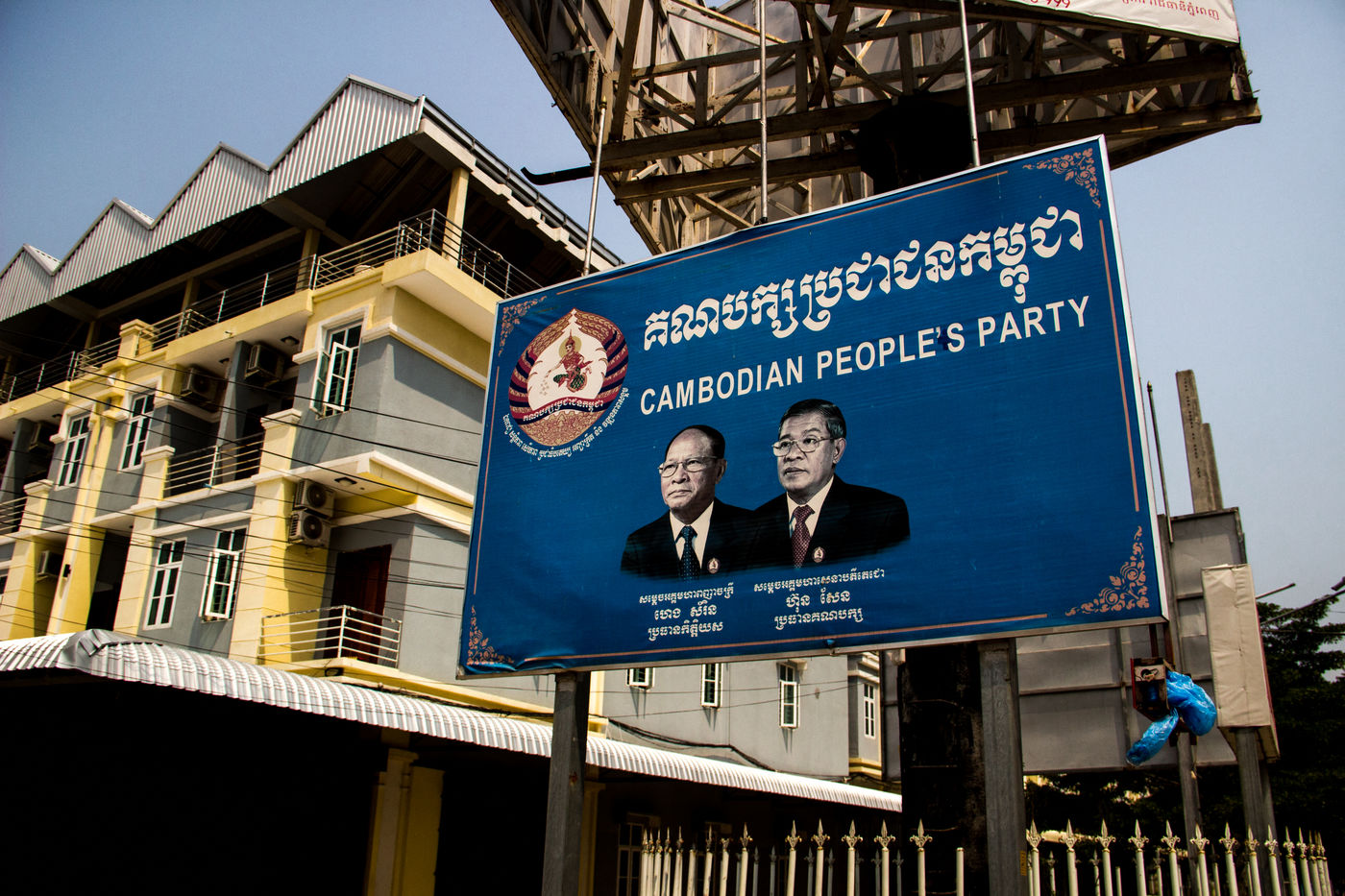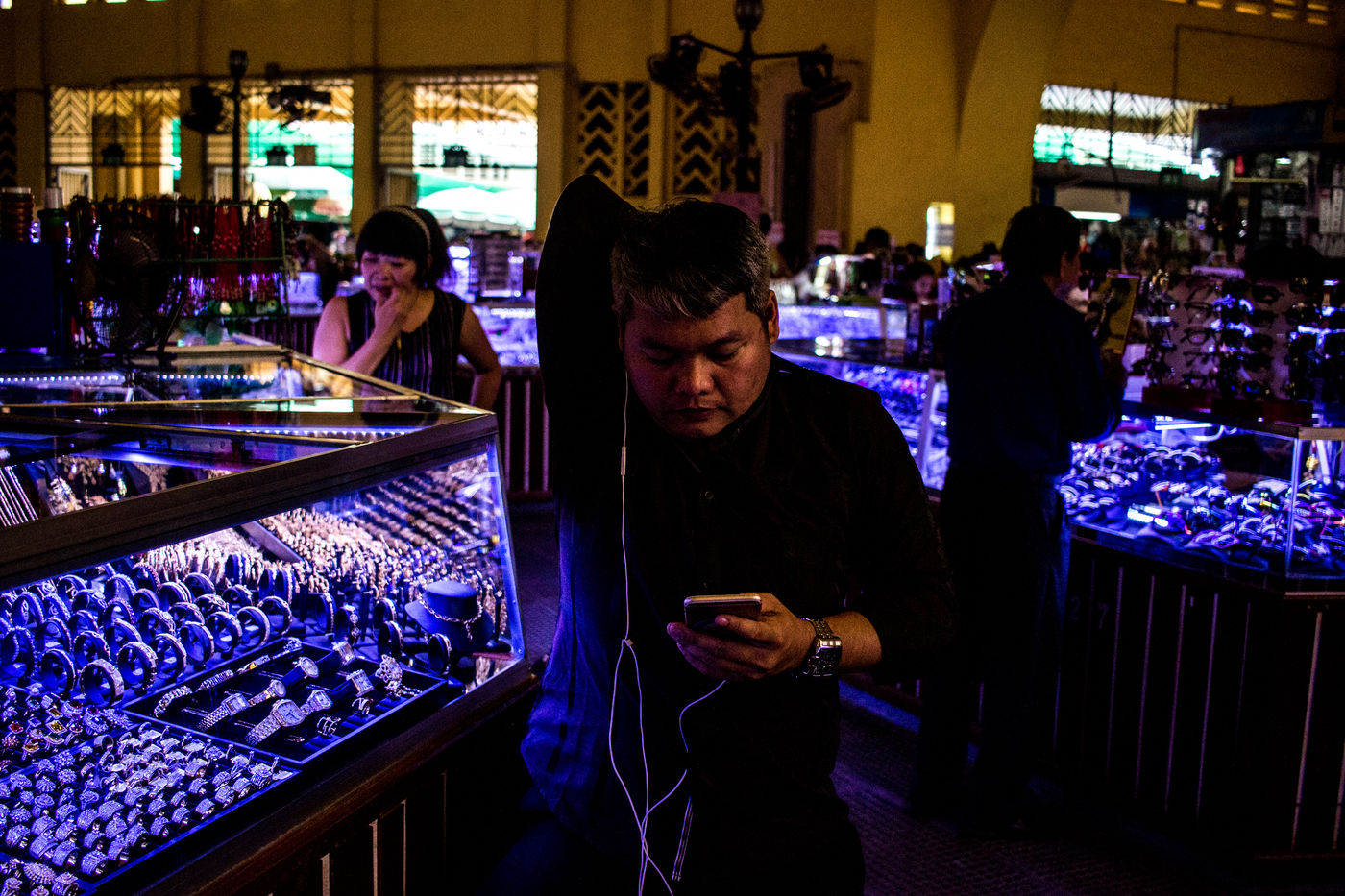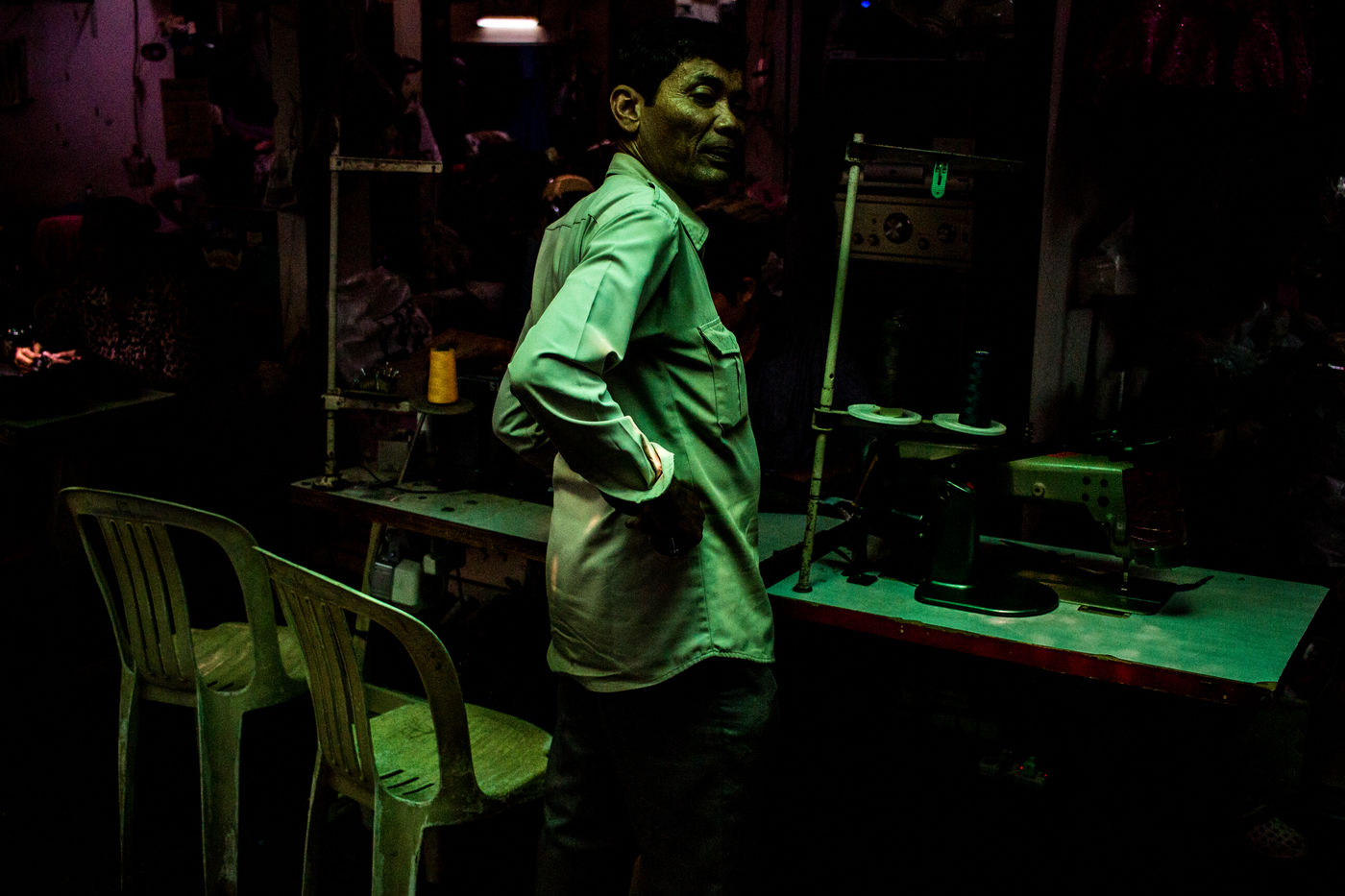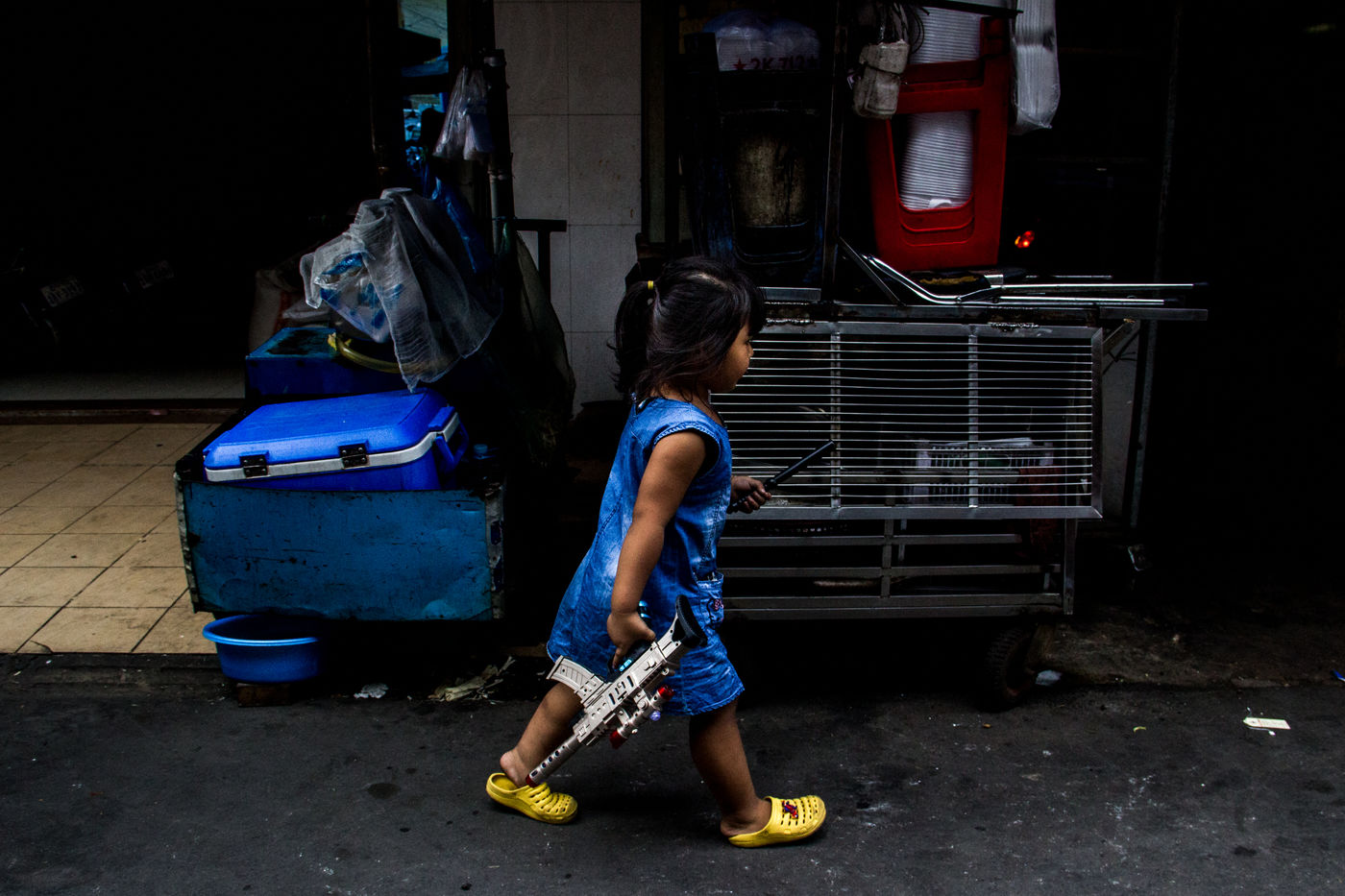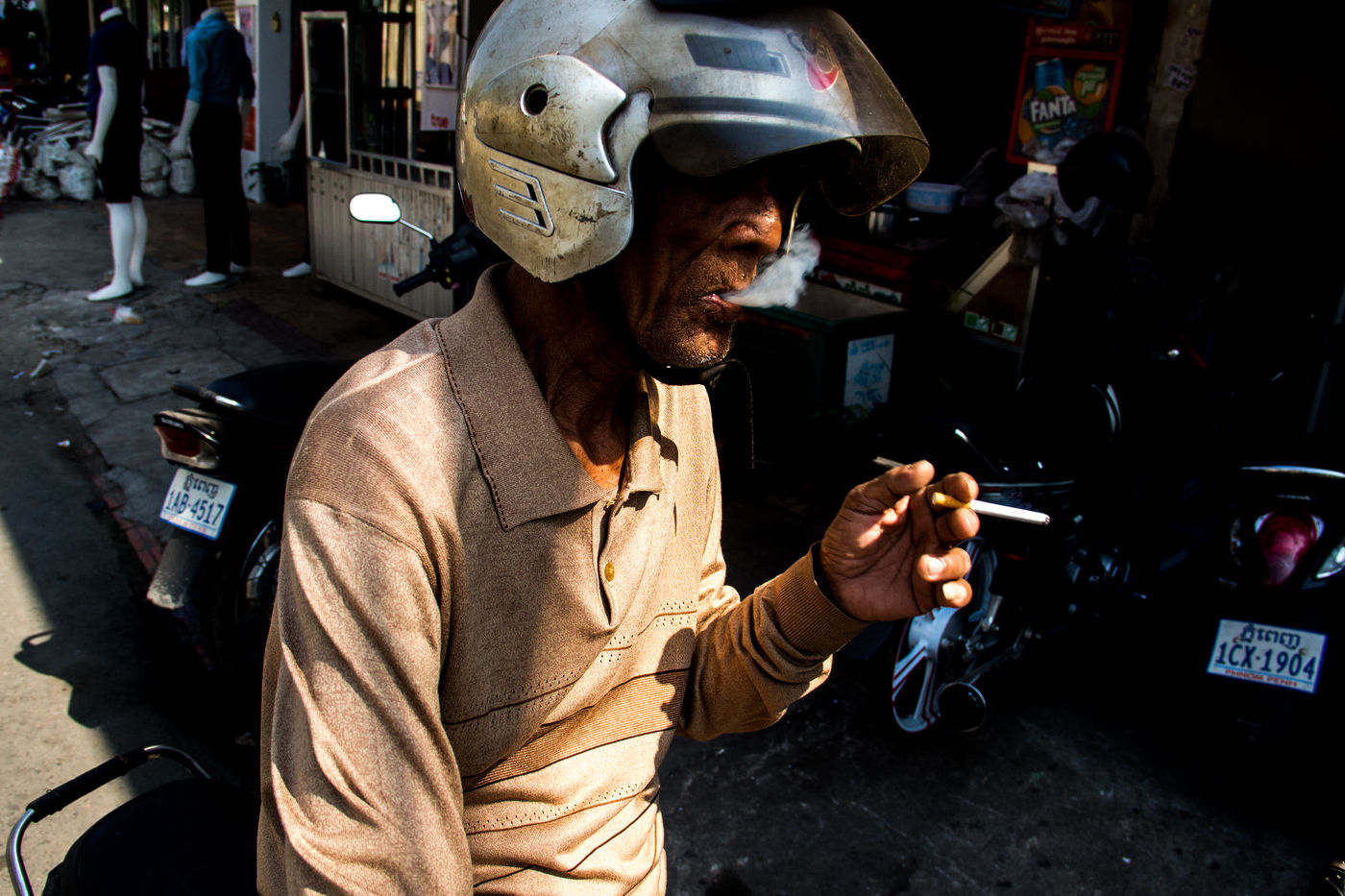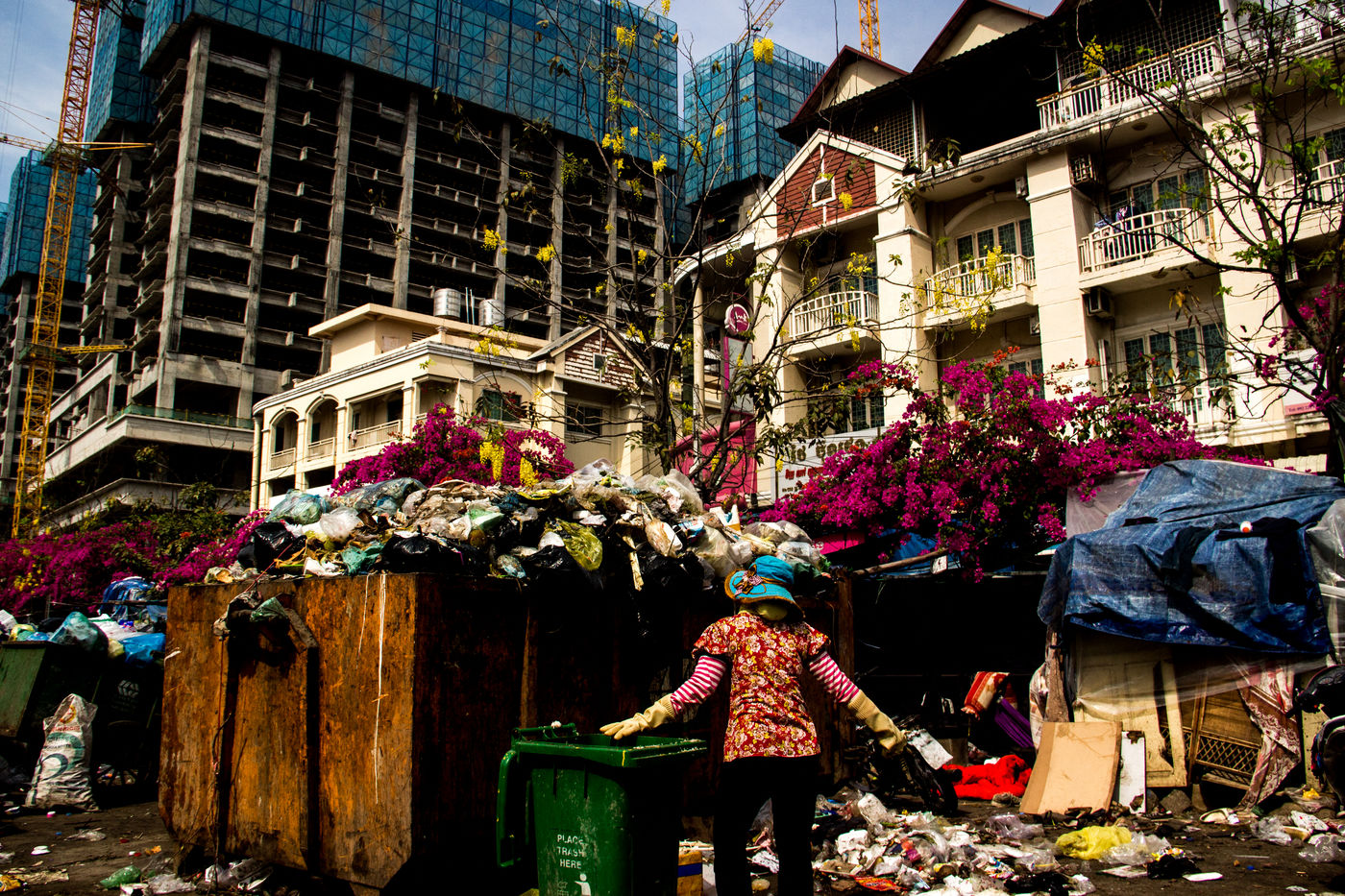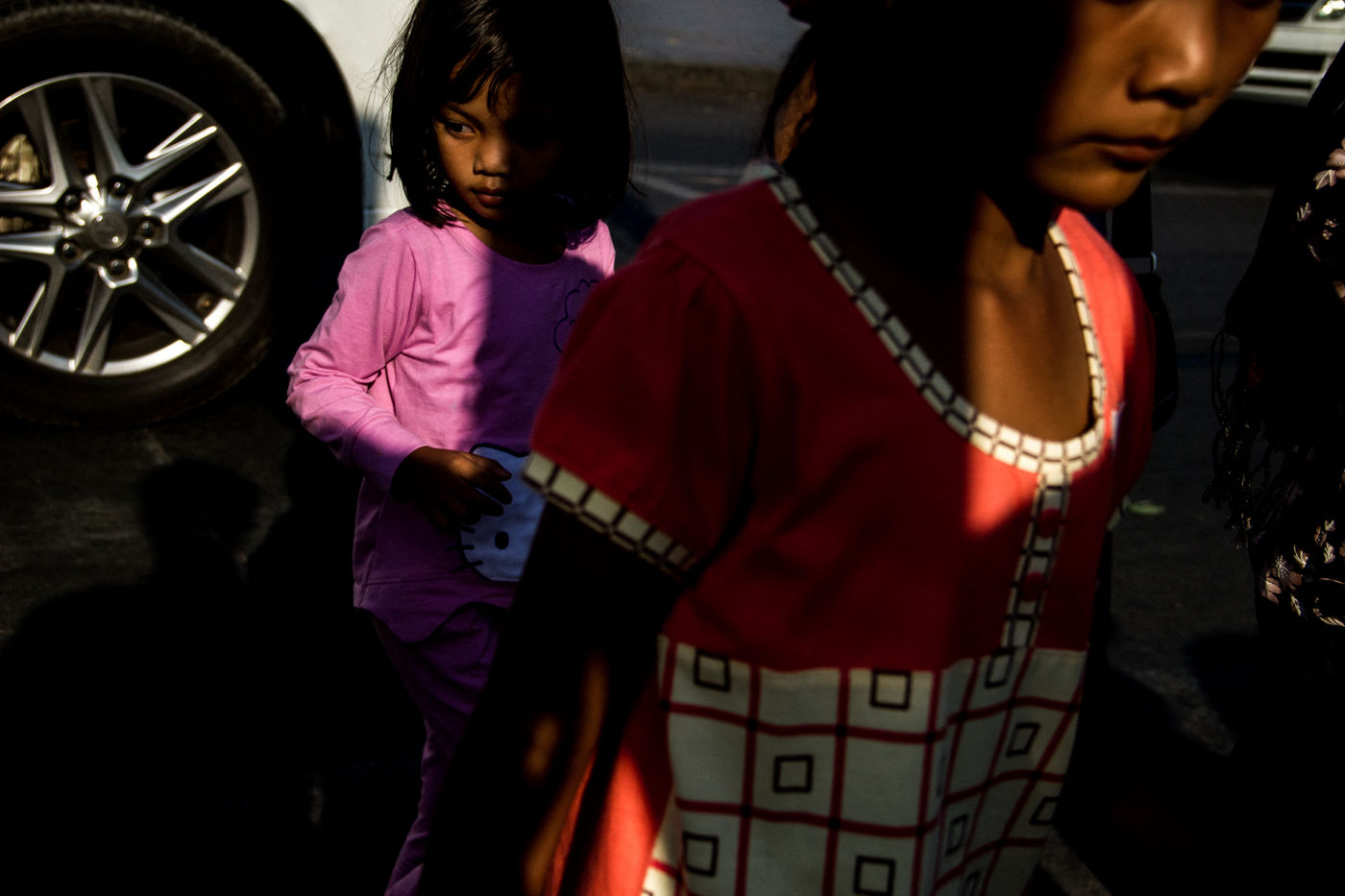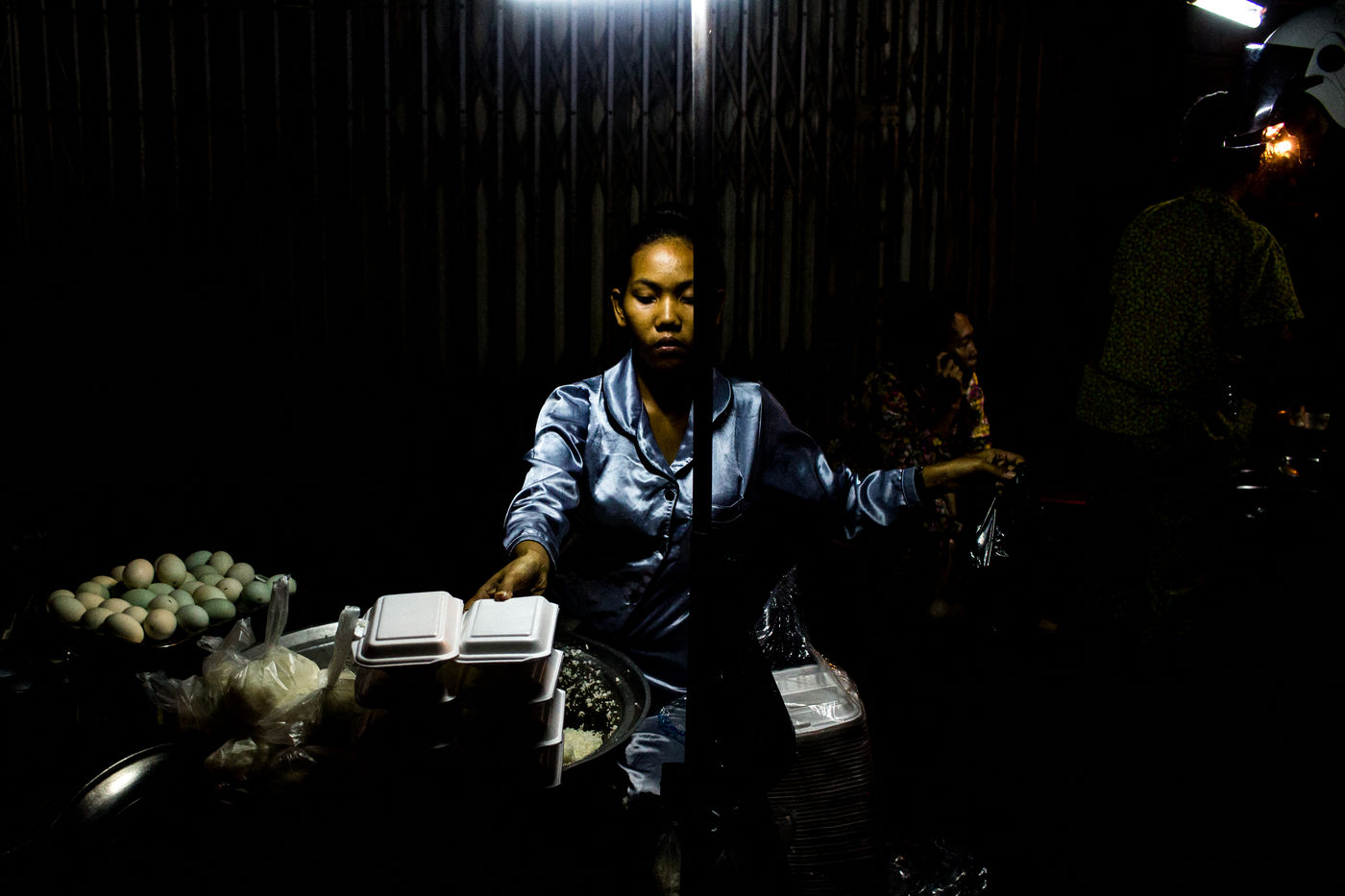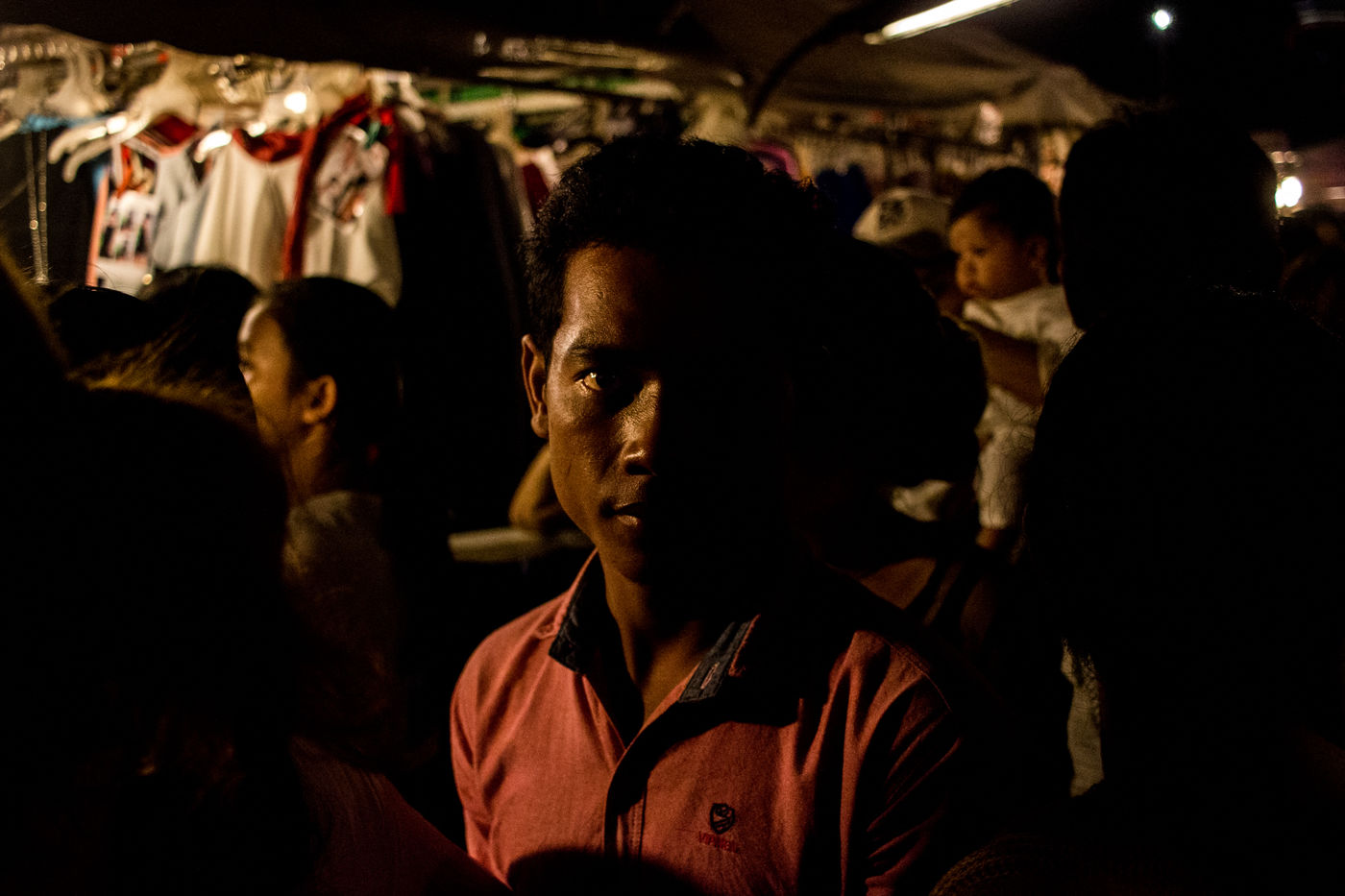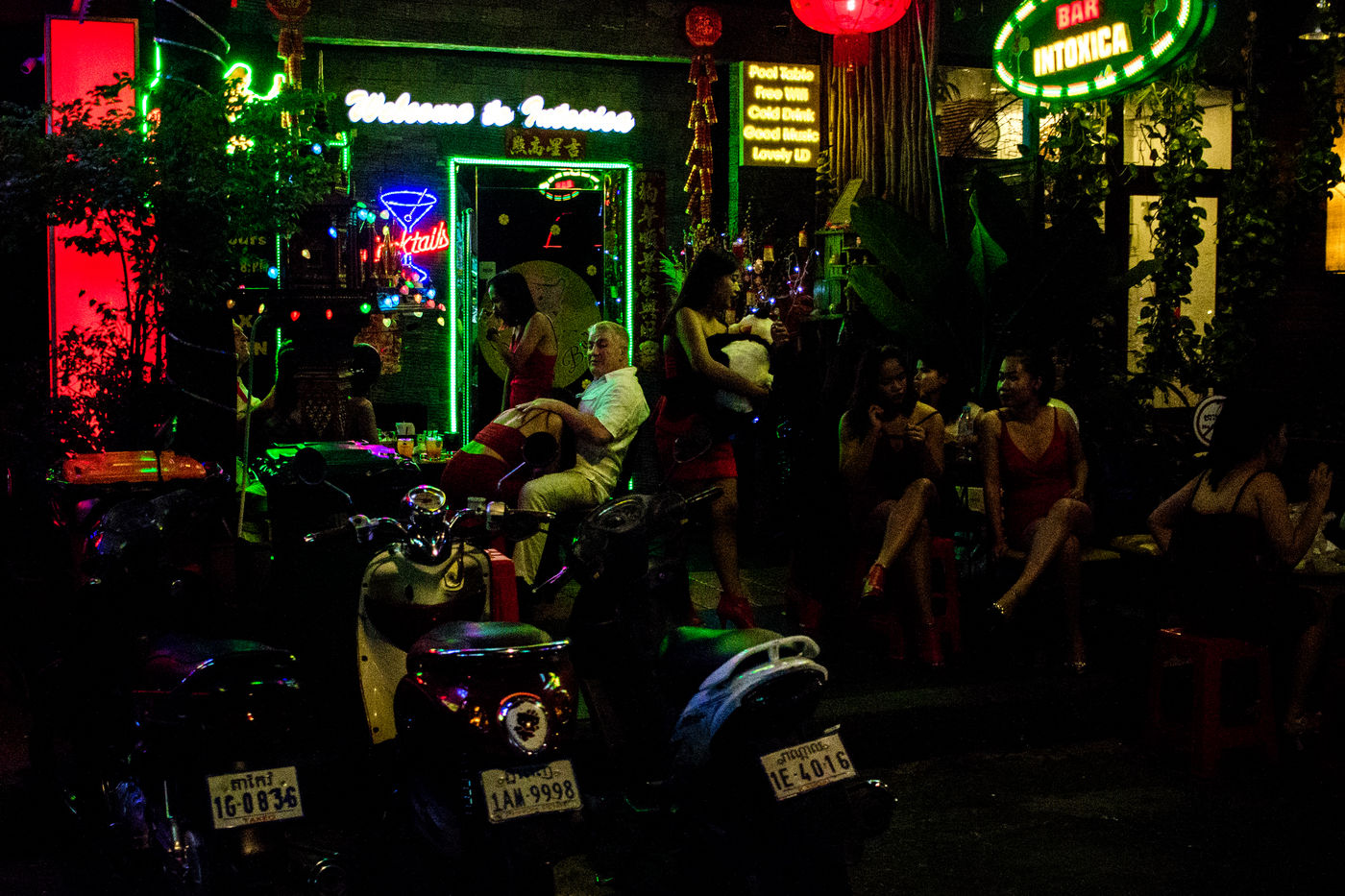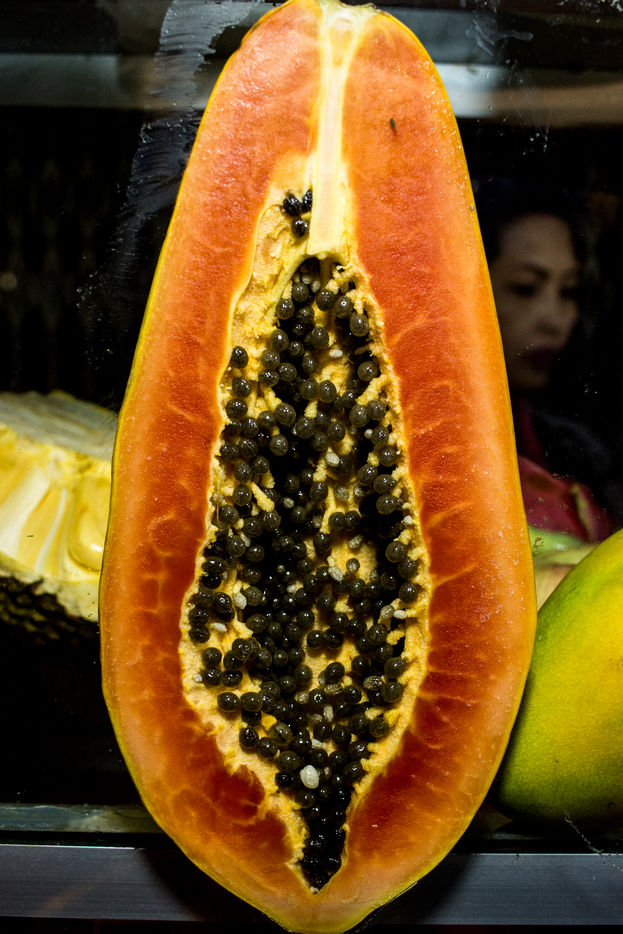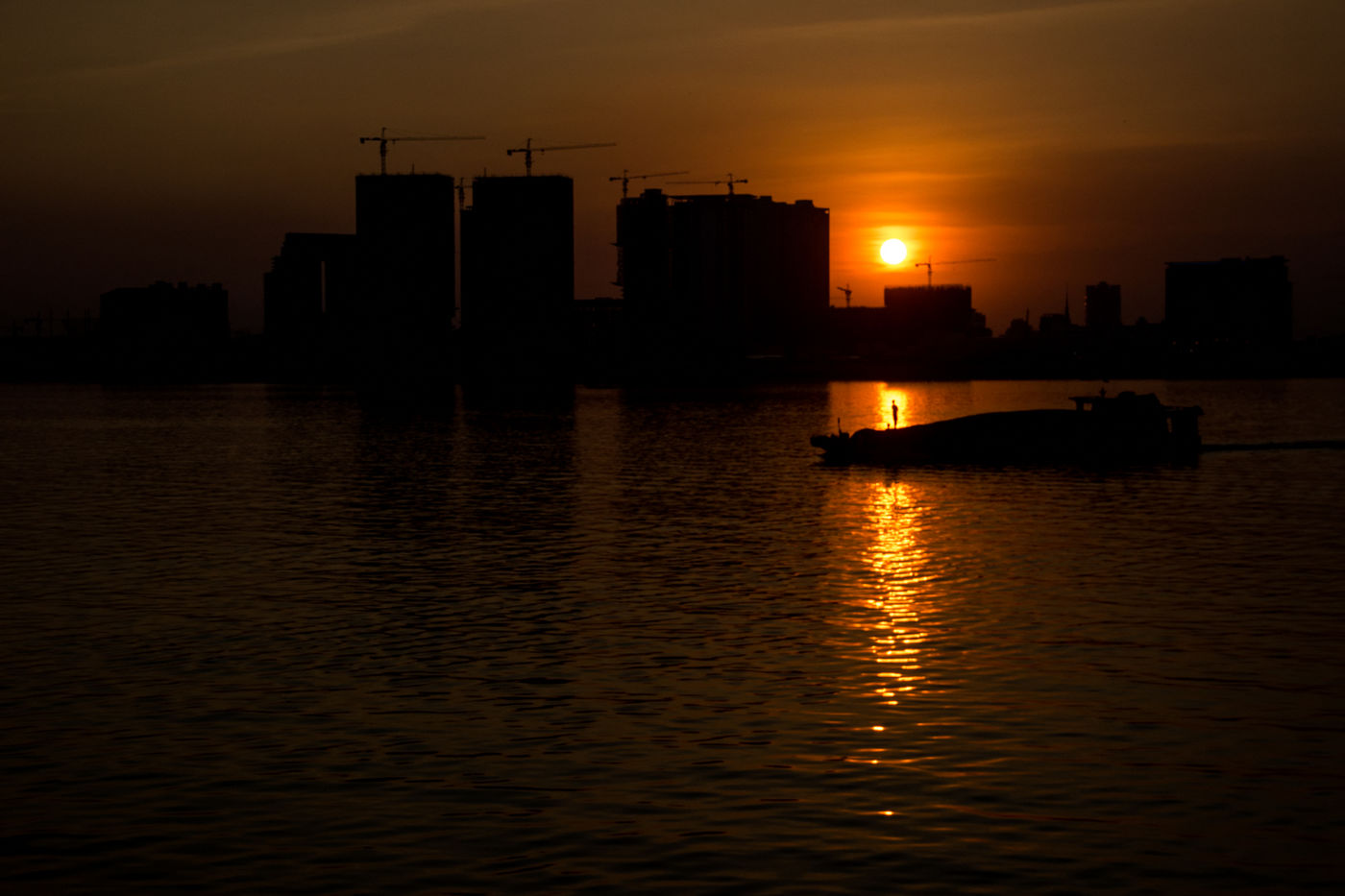MEKONG #3 - PHNOM PENH L'INHARMONIEUSE (CAMBODGE)
DÉCOUVRIR L'OUVRAGE
Ici, un lourd passé hante encore les habitants. En 1975, les tristement célèbres Khmers Rouges ont pris le pouvoir et, au nom d'une révolution radicale, plusieurs dizaines de milliers de phnompenhois, incluant la majorité de l'élite intellectuelle, furent massacrés ou envoyés dans les campagnes pour du travail forcé. Vidée de la quasi-totalité des 2 millions d'habitants qu'elle comptait, la capitale cambodgienne fut laissée à l'abandon pendant presque quatre ans.
Phnom Penh est au croisement de différents fleuves qui se séparent du bras principal du Mekong. Au Nord se détache
le Tonle Sap pour devenir le plus grand lac d'Asie du Sud-Est avec ses phénomènes naturels uniques au monde. Au Sud, il se divise en plusieurs bras afin de former le légendaire
Delta du Mekong au Vietnam.
La ville est également le noeud central d'un vaste réseau routier desservant les provinces du royaume ainsi que les mégapoles des pays voisins telles que Bangkok ou
Ho-Chi-Minh Ville.
Ce joyau d'Asie qui nourrit depuis des lustres les rêves des voyageurs renait aujourd'hui de ses cendres avec un incroyable dynamisme symbolisant la croissance du pays tout entier.
La ville se développe à une vitesse fulgurante et compte 1,5 millions d'habitants. Les buildings sortent de terre au milieu de vieux quartiers qui tombent en ruine. Le paysage change jour après jour en ne respectant aucun plan d'urbanisation.
Ce développement entraîne inéluctablement une augmentation de la pollution. Les canaux de la ville sont devenus un vide à ordures qui se déversent ensuite dans le Mekong.
La ville a tout de même gardé ses tendances malsaines. Insécurité, drogues et prostitution paraissent indissociables de la métropole.
Cette croissance exponentielle, c'est l'argument du Premier Ministre Hun Sen qui, après plus de 30 ans au pouvoir, refuse de céder son trône. Les dernières élections législatives de Juillet 2018 lui ont offert une large victoire très controversée. En effet, le principal parti d'opposition ainsi que les organes de presse indépendants ont été dissous à l'approche des élections. Les méthodes s'avèrent de plus en plus violentes : manifestations fortement réprimées, députés de l'opposition passés à tabac... Le gouvernement aligne ses pratiques sur celles de son principal partenaire économique avec qui il intensifie ses relations : la Chine ; tandis que les observateurs étrangers s'inquiètent de voir le pays renouer avec les méthodes de son passé.
Cette série est le troisième chapitre d'un grand projet intitulé LES VISAGES DU MEKONG.
Avec comme fil conducteur le mythique fleuve Mekong et ses nombreuses ressources, il s'agit d'une grande mise en perspective des enjeux géo-environnementaux liés au développement dans la péninsule indochinoise (Vietnam, Cambodge, Laos, Thailande).
Lien vers le premier chapitre consacré à Ho-Chi-Minh Ville (Vietnam)
Lien vers le second chapitre consacré au Delta du Mekong (Vietnam)
Lien vers le quatrième chapitre consacré au Tonle Sap (Cambodge)
Lien vers le cinquième chapitre consacré aux 4000 îles (Laos)
Lien vers le sixième chapitre consacré à Vientiane (Laos)
Lien vers le septième chapitre consacré à Luang Prabang (Laos)
Lien vers le huitième chapitre consacré à Bangkok (Thaïlande)
MEKONG # 3 - PHNOM PENH (CAMBODIA)
Here, a heavy past still haunts the inhabitants. In 1975, the infamous Khmer Rouge took power and, in the name of a radical revolution, several tens of thousands of Phnom Penh, including the majority of the intellectual elite, were massacred or sent to the countryside for forced labor. Driven by almost all of its 2 million inhabitants, the Cambodian capital was abandoned for almost four years.
Phnom Penh is at the crossroads of different rivers that separate from the main branch of the Mekong. To the North,
the Tonle Sap becomes the largest lake in Southeast Asia with its unique natural phenomena. In the South, it divides into several arms to form
the legendary Mekong Delta in Vietnam.
The city is also the hub of a vast road network serving the provinces of the kingdom and the megacities of neighboring countries such as Bangkok or
Ho Chi Minh City.
This jewel of Asia, which has for a long time nourished the dreams of travelers, is today reborn from the ashes with an incredible dynamism symbolizing the growth of the entire country.
The city is growing at a blazing speed and has 1.5 million inhabitants. The buildings rise from the ground in the middle of old neighborhoods that are falling into ruins. The landscape changes day by day by not respecting any plan of urbanization.
This development inevitably leads to an increase in pollution. The city's canals have become a garbage dump that then flows into the Mekong.
The city still kept its unhealthy tendencies. Insecurity, drugs and prostitution seem inseparable from the metropolis.
This exponential growth is the argument of Prime Minister Hun Sen who, after more than 30 years in power, refuses to give up his throne. The last parliamentary elections of July 2018 gave him a large and very controversial victory. Indeed, the main opposition party as well as independent media outlets were dissolved in the run-up to the elections. The methods are becoming increasingly violent: strongly repressed demonstrations, opposition members beaten ... The government aligns its practices with those of its main economic partner with whom it intensifies its relations: China; while foreign observers are worried that the country will return to the methods of its past.
This series is the third chapter of a major project entitled THE FACES OF THE MEKONG.
With the theme of the mythical Mekong River and its many resources, it is a great perspective on the geo-environmental issues related to modernity and development in the Indochinese peninsula (Vietnam, Cambodia, Laos, Thailand).
Link to the first chapter dedicated to Ho-Chi-Minh City (Vietnam)
Link to the second chapter on the Mekong Delta (Vietnam)
Link to the fourth chapter on the Tonle Sap (Cambodia)
Link to the fifth chapter devoted to 4000 Islands (Laos)
Link to the sixth chapter on Vientiane (Laos)
